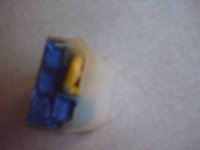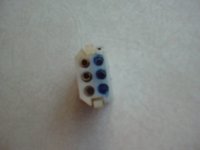Lots of people remove the reserve lighting unit. They jumper some of the wires where it plugs into the harness. I'm just not sure which ones, from looking at a diagram I think it's the yellow/blue to the blue/black.
In the diagram the headlight on/off switch gets power from the key switch on the red/yellow. It feeds the dash and tail lights on the blue wire. It feeds the reserve lighting unit on the blue/black wire.
On the RLU the Black wire is ground. the green wire goes up to the indicator light on the dash. The yellow/blue feeds one side of the dimmer switch. The blue/green feeds the other side of the dimmer switch.
The blue/green side of the dimmer switch is what works with the RLU to feed power thruough the resistor to power the unblown element of the headlight when the other element blows.
A some what useless function. Most people can see when the headlight isn't working right.
By hooking the Yellow/blue wire to the Blue/black wire. Power coming in on the Blue/black goes wire back out on the Yello/blue wire to power the dimmer switch.
Others that have removed the RLU can tell us if I'm right or wrong.
I have an 81 and everthing is working ok. I could test out the jumper, But without the on/off switch which they did away with in 80, I'm not sure it will work the same.
On the 81 the RLU has an extra wire, a yellow one.
With a bit of studying of the diagram I think the jumper will work on the later no on/off switch bikes to. The RLU gets it power on a Blue/black wire same as the earlier RLU's, It just gets it from the safety relay instead of an on/off switch.
I'll go out and try it and report back.
Leo

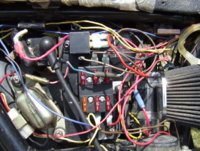
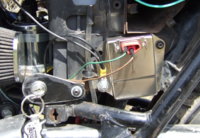
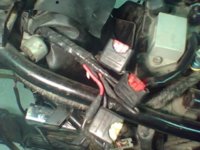



 I just keep an eye on them. Glass fuses are hard to find these days compared to modern fuses, I've noticed. Hard to find a dial telephone too
I just keep an eye on them. Glass fuses are hard to find these days compared to modern fuses, I've noticed. Hard to find a dial telephone too 